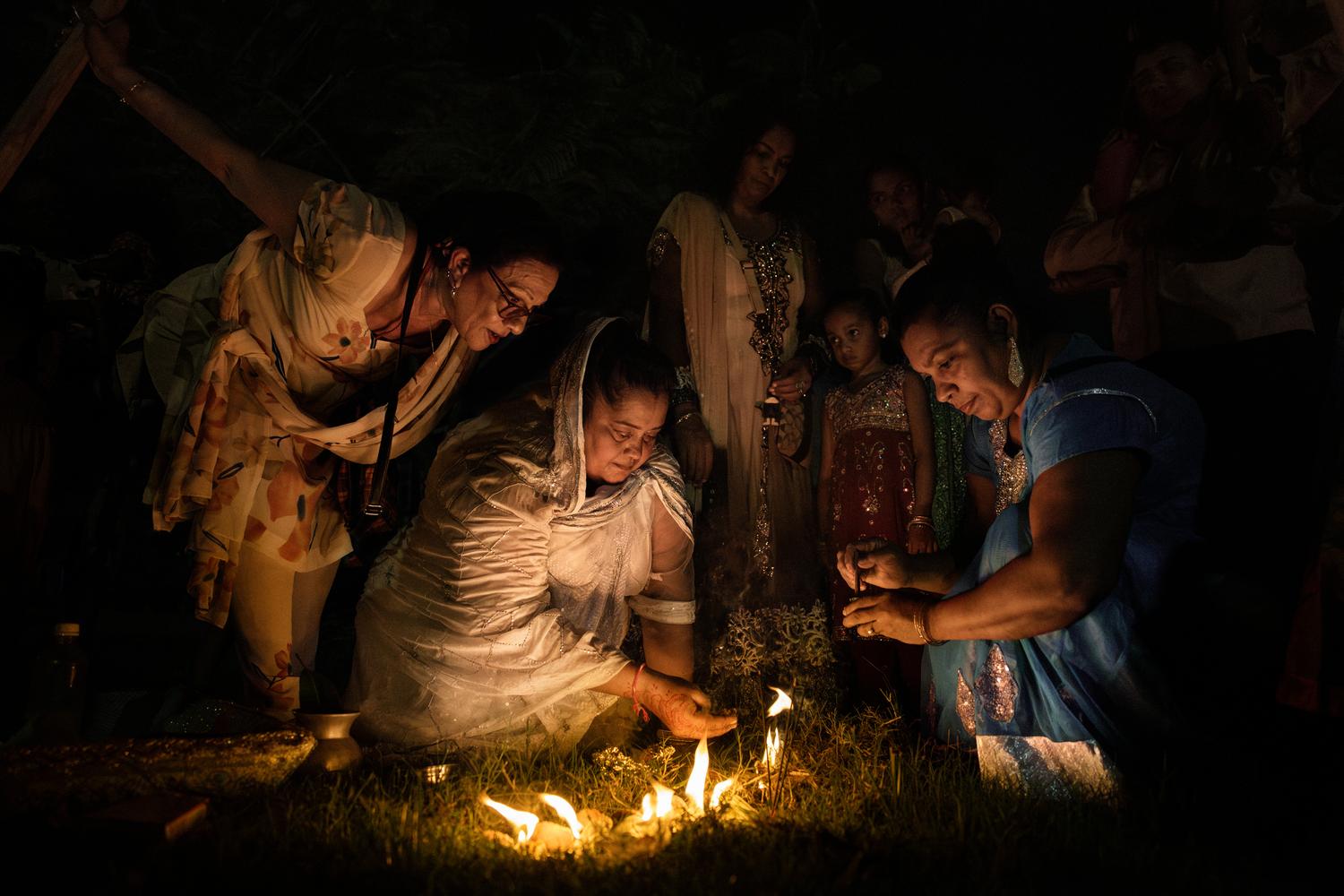
Northern Guyana's coastal forests and mangroves are among the highest-carbon ecosystems in the world. Its coasts are also among the few landmasses in the world that are expanding: New land is slowly emerging from the sea thanks to sediment deposition from several nearby rivers, with mangroves sprouting beyond the seawall that protects the capital city, Georgetown.

“Irrecoverable carbon” refers to the vast stores of carbon in nature that are vulnerable to release from human activity and, if lost, could not be restored by 2050 — when the world must reach net-zero emissions to avoid the worst impacts of climate change. Learn more about this critical research.
Altogether, Guyana holds more than 1 billion metric tons of irrecoverable carbon, locked away in forests, mangroves and peatlands, but the recent discovery of oil off the country's coast is bringing on a period of rapid change.
Maíra Erlich, a Brazilian wedding-photographer-turned conservationist, spent two weeks with Conservation International Guyana's team deep in the coastal forests. Her camera captured evocative images of the Guyanese interactions with their rapidly changing coasts.
“In this story of life, death, water and people, nature will always find a way to heal itself,” Erlich wrote of the experience.
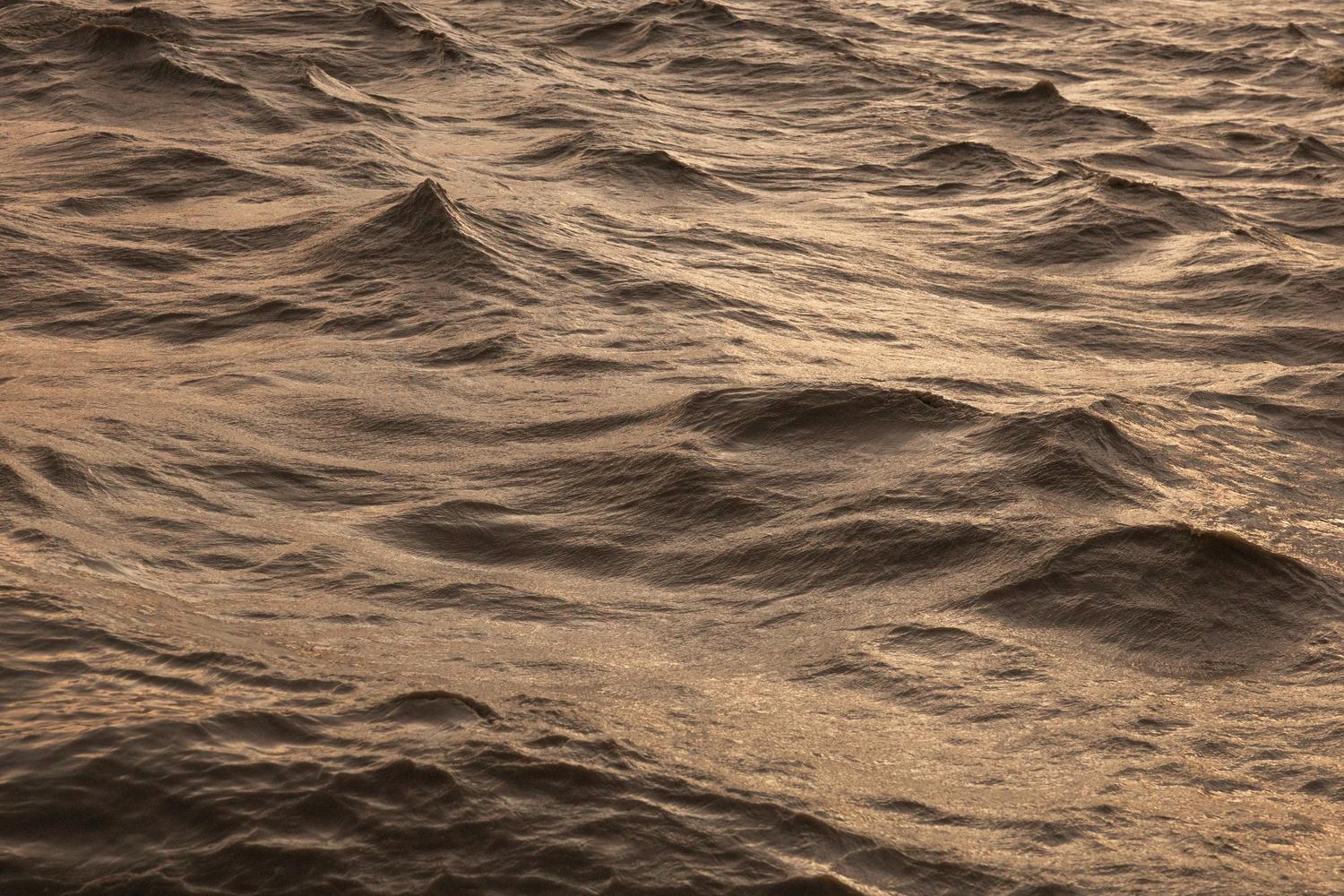
The tan colors seen along Guyana's coastal waters originate some 4,000 miles away, from natural erosions that took place in the Andes Mountains. These sediments have traveled across South America through the Amazon rivers and into the Atlantic Ocean, at the North of the continent, and forming this massive mudbank that can be seen from space.

In the Guyanese Hindu culture, there's an important ritual usually performed two days before the wedding day. As an expression of homage to Mother Earth, the Maticoor ceremony (also called Dig Dutty) takes place in an area of open ground accompanied by the sound of drums. The women of the family will dig samples from the earth, light candles and combine other elements like saffran, in order to ask for prosperity for the upcoming marriage.
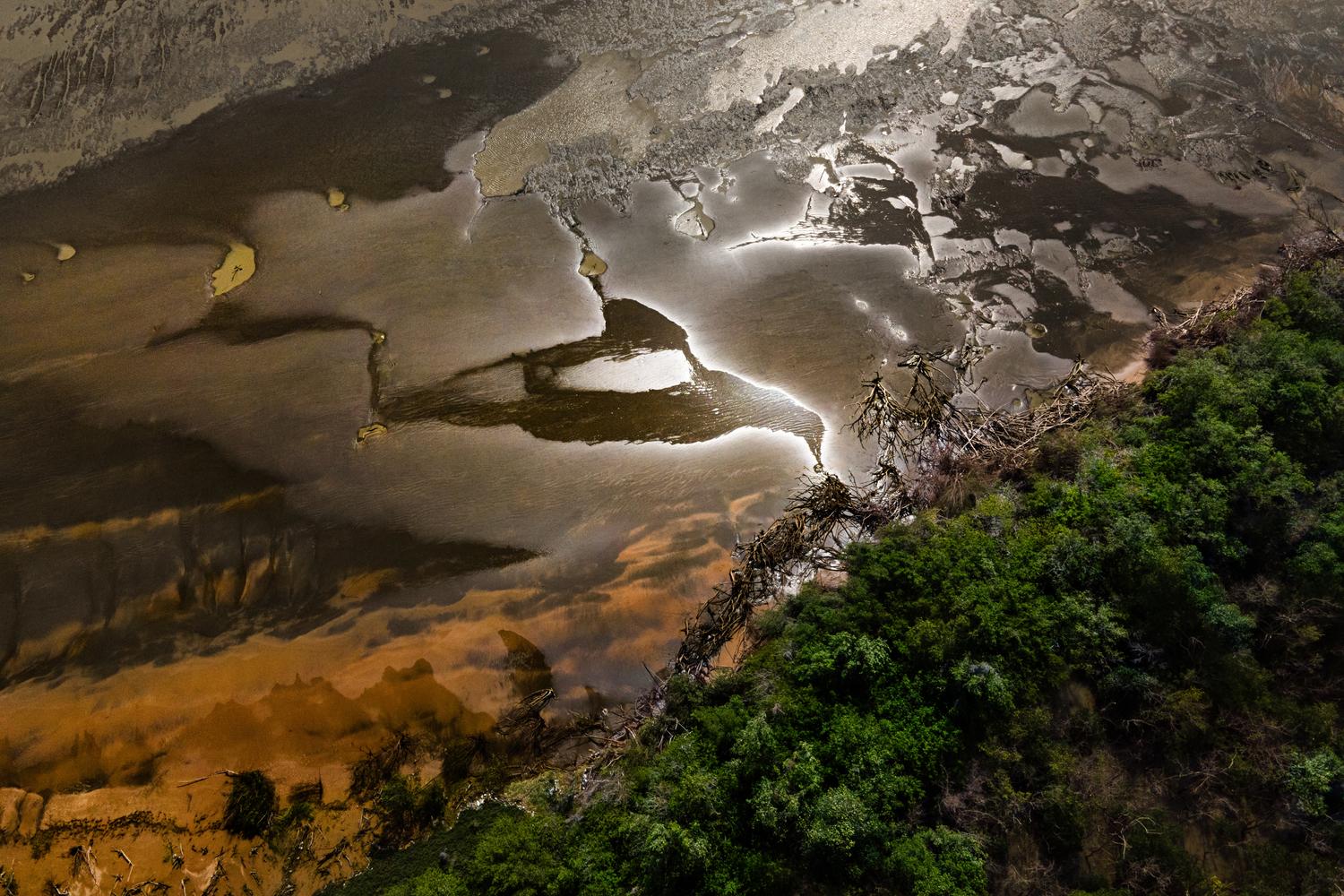
At the mouth of the Mahaica River, In an area where mud meets mangroves and the river waters, a figure that looks like a bird is seen from an aerial view.
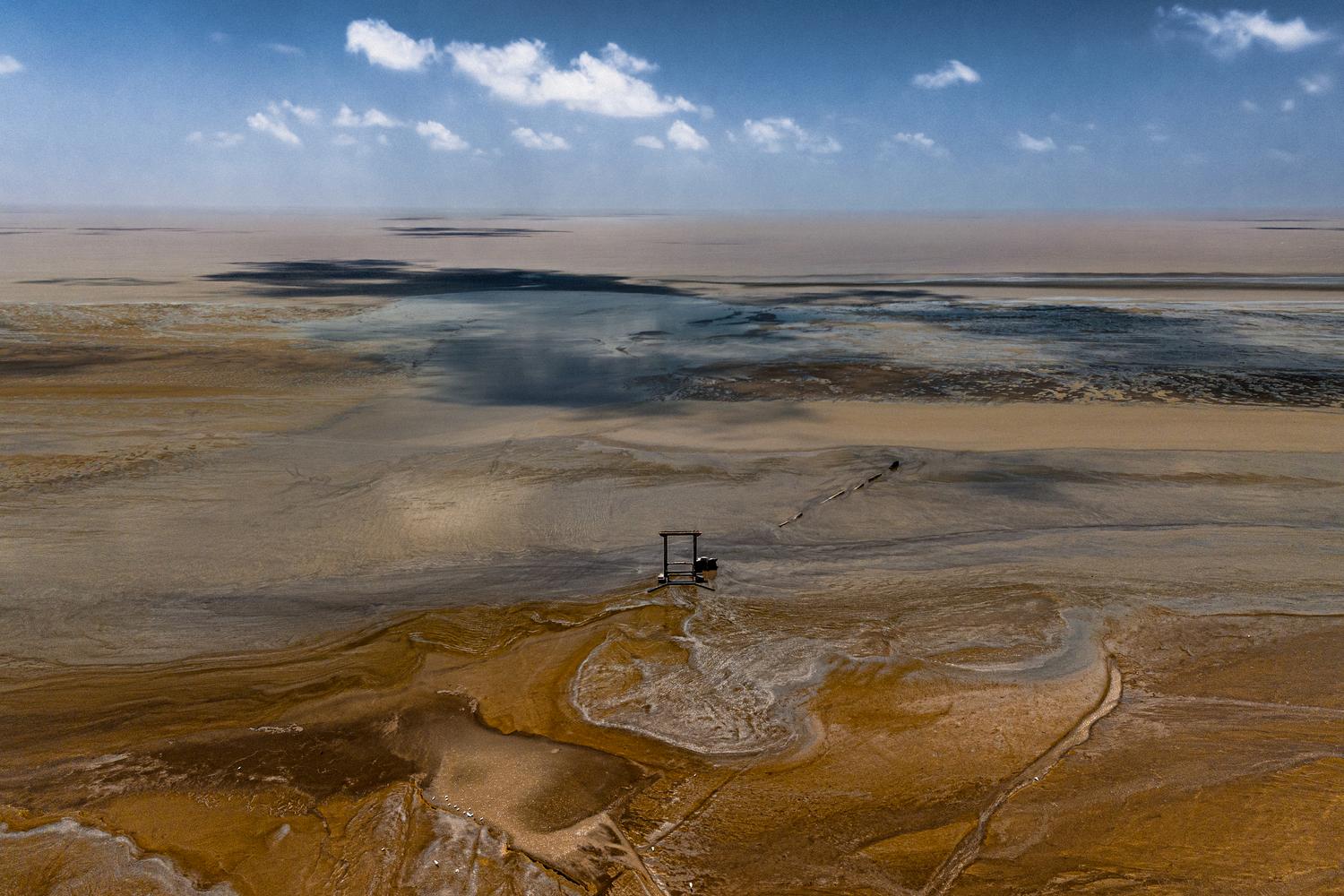
An ancient deactivated koker, as sluices or floodgates are called in Guyana, is seen over a mudbank. The sea line has been displaced due to the advances of the ocean towards the city of Georgetown and the old koker stands alone and far from the current coast line.
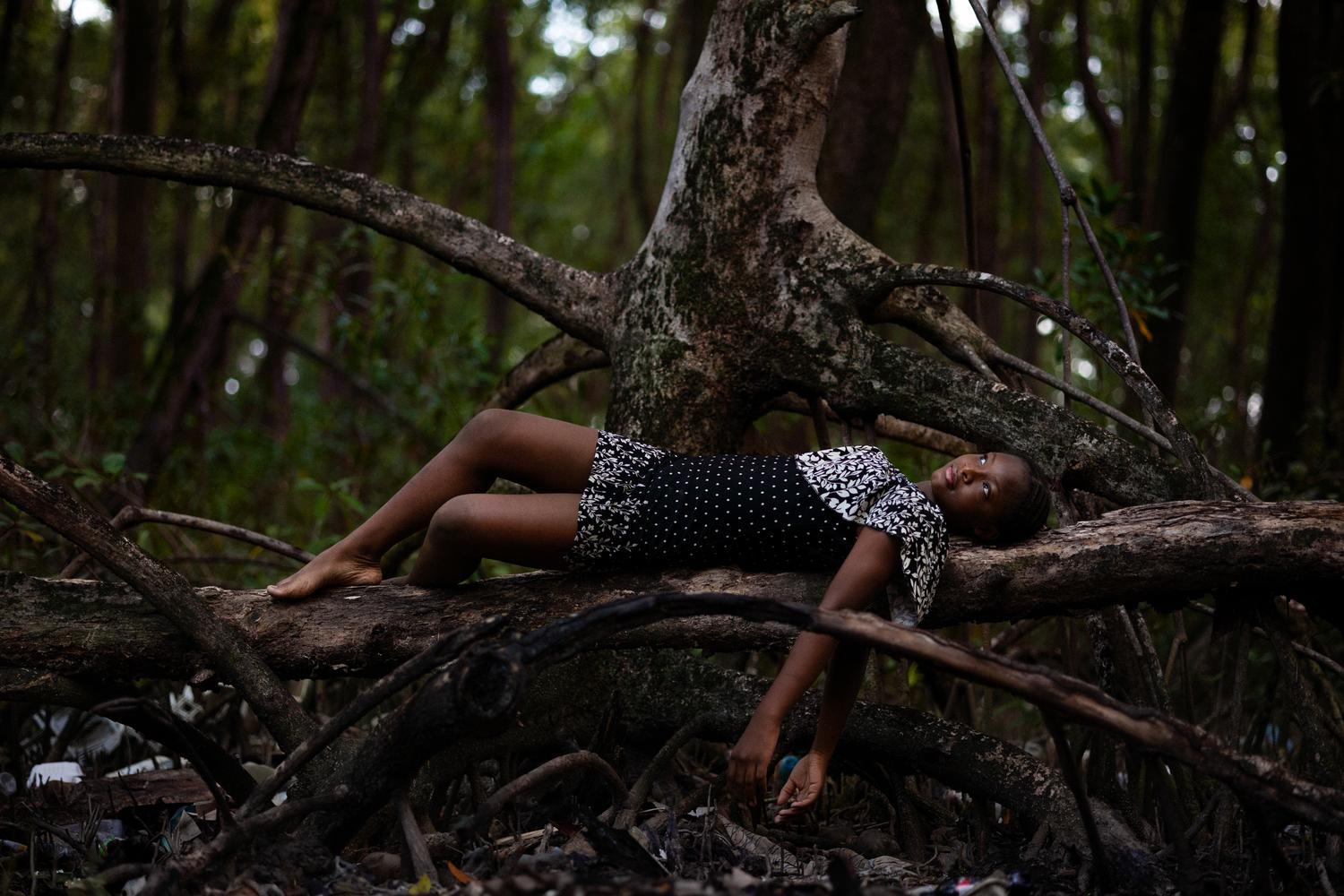
Jessica Higgins has lived her whole life in a wood barrack in a mangrove area. She lives in Plastic city, an out of sight shanty town located at the mouth of the Demerara River and inside a mangrove forest, where people live among mangroves and garbage. This was the first time she climbed a mangrove root.
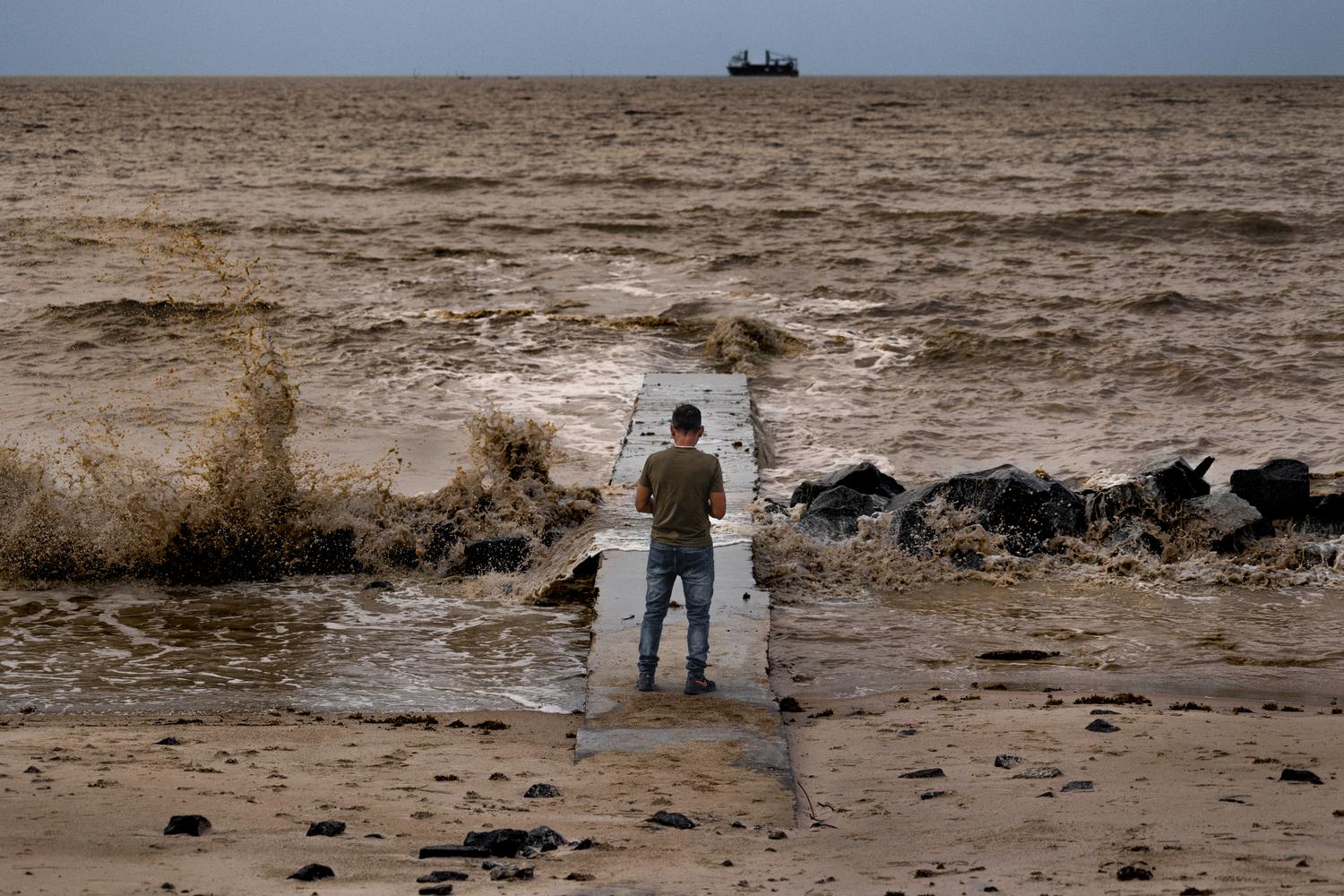
At high tide, the waves will crash against the stones, the jetty or the seawall along all coastal Guyana.
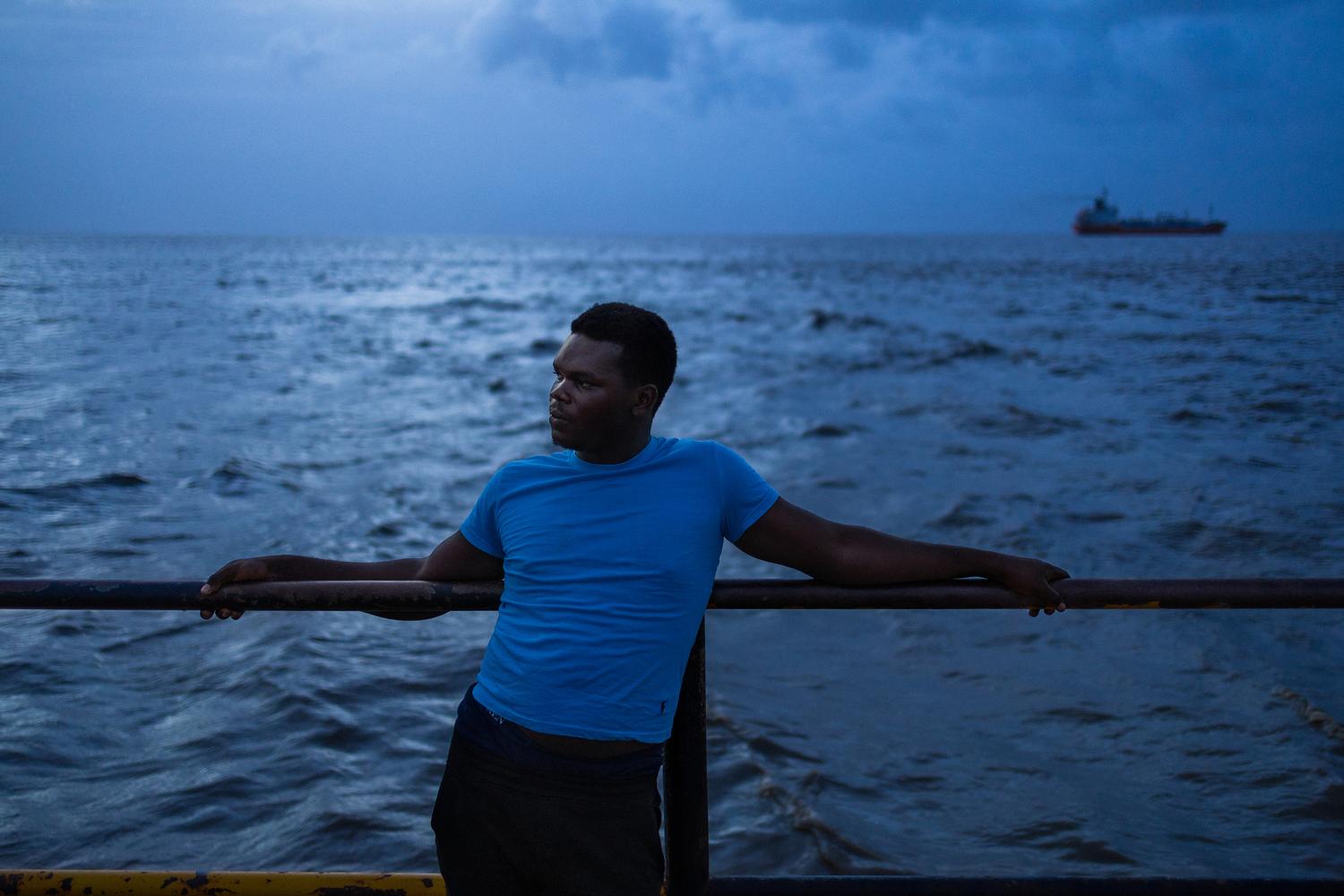
Tion Darlington, chills at the very corner of Georgetown. A very windy spot where the waters of the Atlantic Ocean meet the waters of the Demerara River.
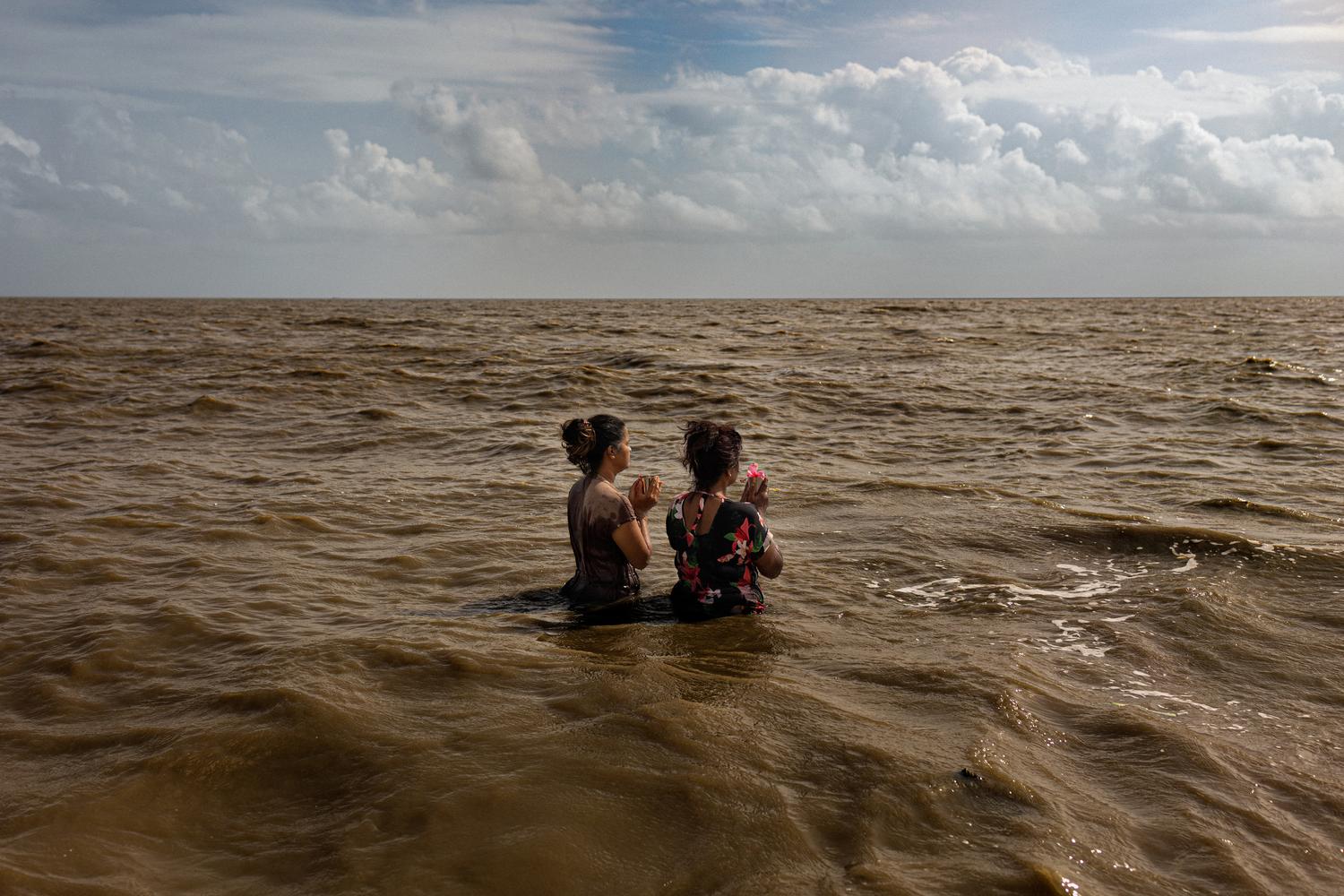
On Mother's day in Guyana, many Hindus go to the beach to deliver offerings to Mother Ganga, the personification of the Ganges River, a sacred river in India. She is also considered by the Hindus as the goddess of purification and forgiveness, and mother to humanity. The offerings can consist of lotus flowers, fruits, incense and other elements that are delivered into running water like the sea or the river.
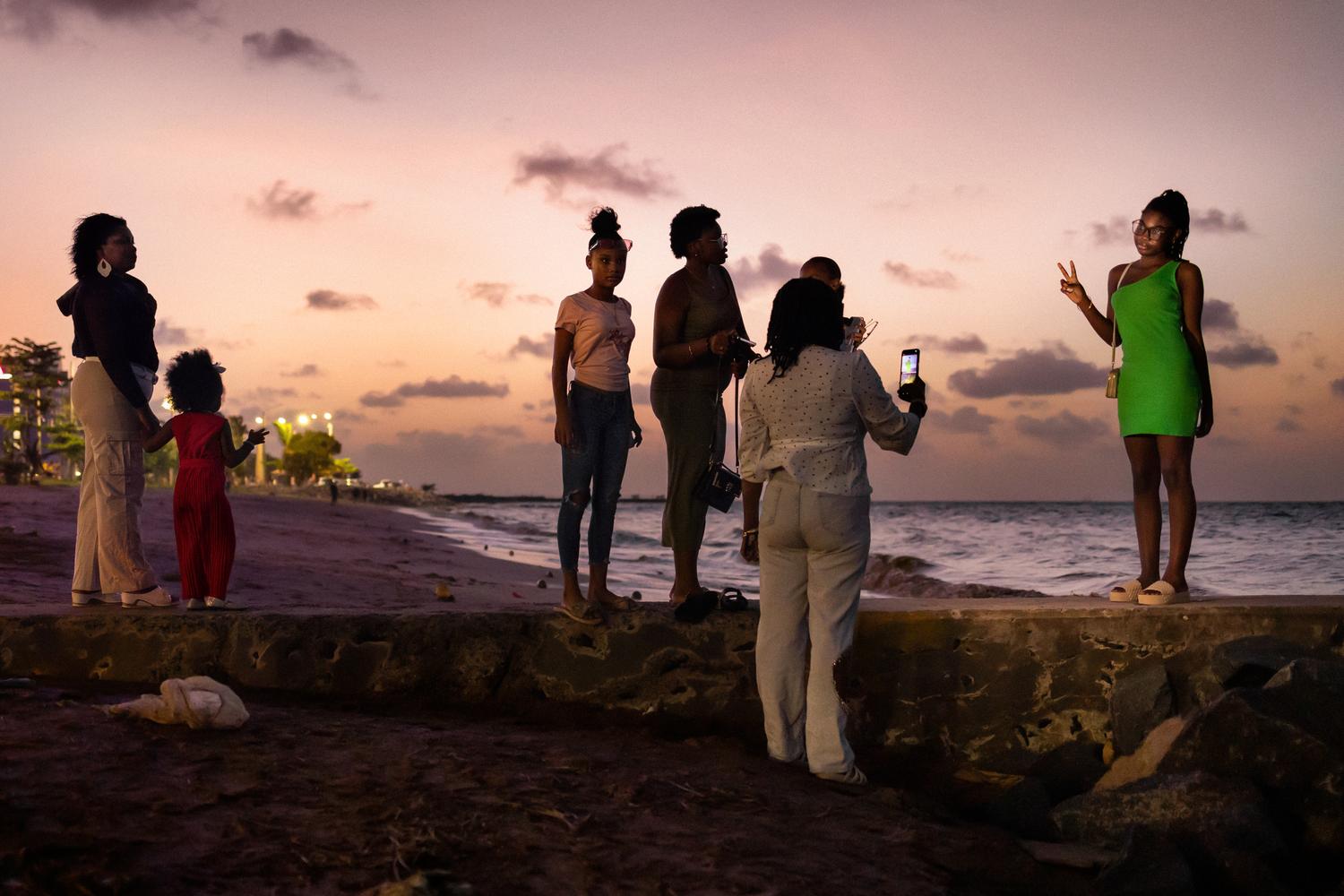
Katiffa Fraser, poses for a portrait at a jetty by the ocean in Georgetown. She went to the beach with her mother and sisters to celebrate Mother's day.
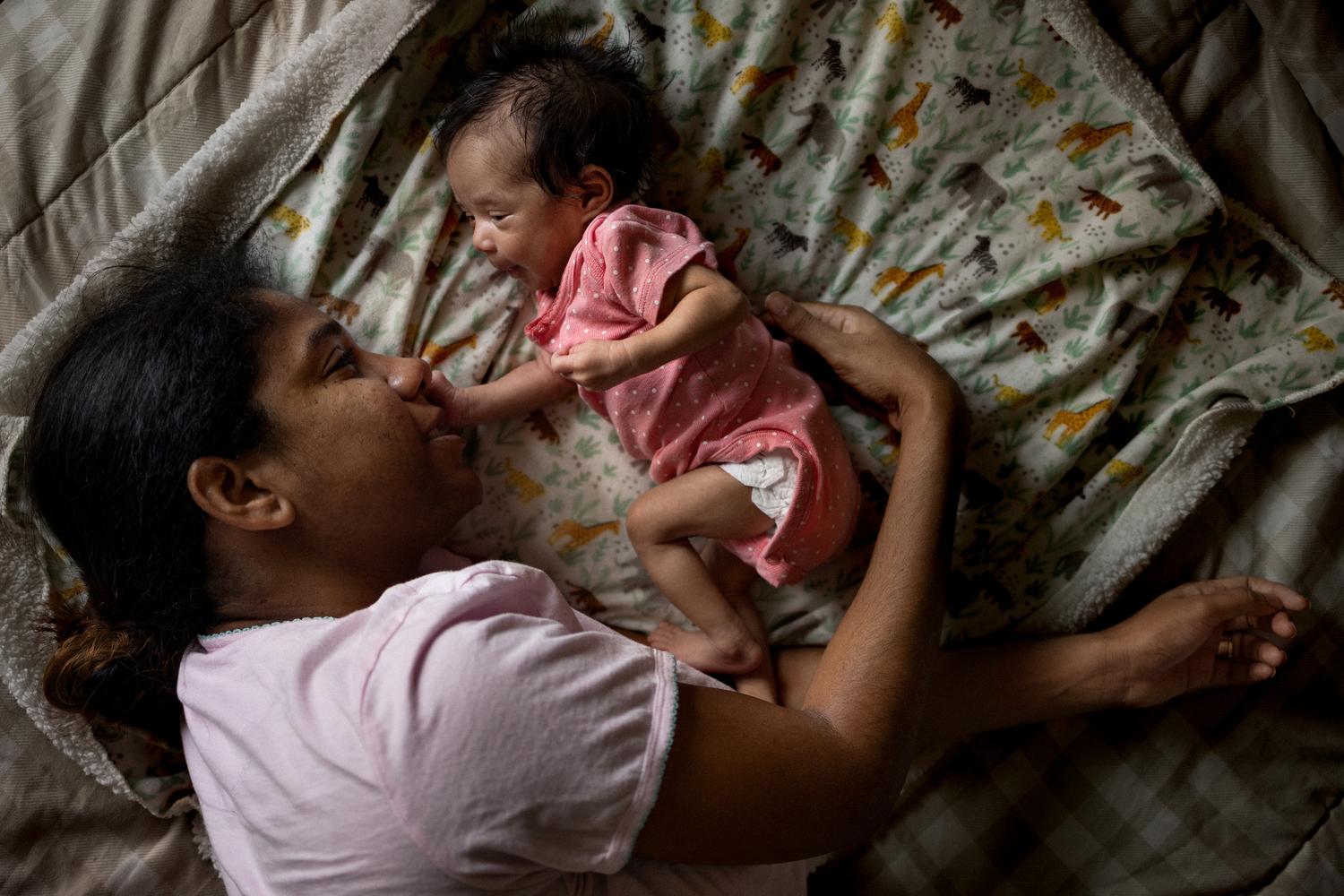
Kerry Anne Cort with her newborn baby on Mother's day.